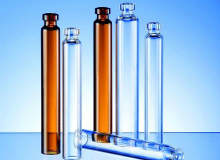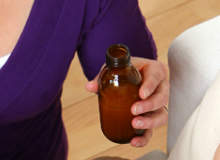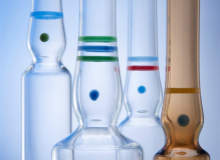The Right Syringe for Every Application
The first time that most of us see a syringe and needle we are small babies and our mothers have taken us to the doctor to be vaccinated. Yet it is isn’t just children who need vaccinations. For some diseases, we have to get vaccinated again as adults because the original vaccinations stop being effective after 20 years or so.
There are also new vaccinations that we need as adults. Many people get regular flu jabs, for example.
Vaccines and other medications are filled into glass syringes because glass is inert and impermeable. That’s why it is perfect for the long-term storage of medications.
This helps us when we are in a hurry and need to administer the right dosage quickly, because the medication is already filled in the syringe and ready to inject, so we don’t need to take it out of a bottle first with a disposable syringe.
These ready-to-use syringes are also ideal for use in the home. For example, patients can inject themselves with heparin to prevent thrombosis instead of having to travel to the doctor or hospital each time they need an injection.
Injections generally work faster and more effectively than oral medications. The medication goes directly to where it is needed and its effect isn’t weakened by the digestive process.
Various factors are contributing to fast growth in the market for ready-to-fill syringes, and the pace of innovation is impressive.
Developments in the emerging markets
The globalisation process has improved the level of healthcare provision in countries around the world. As social prosperity increases, health is becoming an important and affordable commodity. The wider incidence of ‘civilisation diseases’ such as diabetes and high blood pressure, which are common in the Western world, are resulting in growth in the use of healthcare services.
Healthcare costs
Rising demand inevitably means greater pressure on costs. Healthcare providers are calling for a cap on the continuously rising costs to prevent what is known as the ‘patent cliff’. Once drugs lose patent protection, generic versions appear to compete with the few and generally expensive innovations. In this scenario, prefillable syringe suppliers are selected according to the criterion of cost-effectiveness, which makes standard solutions necessary.
Ageing population
Another trend has emerged as a result of demographic developments. In ageing populations, the proportion of people with long-term or chronic health problems such as diabetes, rheumatism or multiple sclerosis, who often need parenteral drugs, increases. Administering these parenteral drugs at medical centers or clinics puts a great strain on both the healthcare system’s budget and the patients’ quality of life. Prefilled syringes and autoinjectors which are suitable for home treatment are therefore becoming more significance.
New drugs and technologies
Innovative biotech drugs and a series of new ophthalmic drugs require primary packaging manufactured to exacting standards. The primary packaging for these drugs also has to meet increasingly tough safety and ergonomics requirements, which is driving innovation in drug delivery device development. For example, the legal requirement that the packaging has to provide effective protection against needle injuries has led to the development of new needle safety systems.
Drug delivery device designs are incorporating more and more ergonomic features to simplify the administration process for patients and medical personnel. In this context, the traditional vial and ampoule systems are now increasingly being replaced by prefilled syringes, which guarantee precise dosage and save time because there is no need to draw the medications up into the syringe manually or change disposable needles.
Medical and technological progress are another prefilled syringe innovation driver.
Collaboration between pharmaceutical companies and syringe manufacturers
In order to optimally meet the primary packaging requirements of modern pharmaceutical drugs and exploit the limited lifespan of patented products to the full, intensive collaboration between the pharmaceutics industry and prefillable syringe manufacturers is essential. Ideally, they should already be working together when the pharmaceutical product is being developed so that the drug can be matched to the most suitable syringe as soon as possible. If the prefillable syringe is to be part of a drug delivery device, cooperation with the device developer is also necessary so that the fastest and most cost-effective solution can be found and no time is wasted with unnecessary development loops.
Prefillable syringes in autoinjectors
Autoinjectors reduce the costs of chronic disease treatment and eliminate the need for patients to visit their doctor or a clinic on a daily basis. They ensure the safe and precise dosage of self-administered medications and eliminate psychological barriers surrounding the invasive process of injecting because the needle isn’t visible before the device is used. The syringe and device have to be tailored to one another to maximise dosage precision. It is obviously important, therefore, to have a syringe manufacturer with extremely precise production processes. Tolerances which are as narrow as possible ensure that the primary packaging sits firmly in the injector without risk of breakage.
Above all, the injectors have to guarantee that the entire prescribed dose is administered. Since the autoinjector’s spring tension is non-variable, the syringe’s break loose and glide forces have to be within the prescribed specifications. The desired mechanical properties of the syringe are achieved by siliconising the syringe barrel. The silicon coating plays an important role in reducing the forces that are necessary to move the plunger head. However, the silicone coating cannot be too thick, otherwise there would be too much free silicone oil inside the syringe. The objective is to optimally match the syringe with the type and viscosity of the medical silicone oil used and the plunger head’s properties.
Diving nozzles for silicone application can considerably improve the evenness of the coating across the entire length of the syringe body. If the active ingredient in the pharmaceutical drug needs a low-silicone primary packaging, the silicone coating can alternatively be baked on. This process involves the use of very low quantities of silicone oil and chemically bonding it to the glass surface.
Innovative technologies for new pharmaceuticals
Many modern-day pharmaceuticals are bio-engineered. These biotech drugs typically have extremely high molecule size and complexity. Their active ingredients can be effective in the tiniest of quantities and they are often very expensive.
These properties of biotech drugs pose special challenges to pharmaceutical manufacturers. Also, they are so expensive that unnecessary overfill has to be avoided at all costs and extremely precise dosage is essential. Prefilled syringes are the answer to both the above problems. The silicone coating on these syringes has to meet stringent requirements because it doesn’t just have to improve glide properties, but also deliver a hydrophobic effect, which impairs adsorption of active ingredients or adjuvants on the glass surface. At the same time, it is necessary to minimise the protein aggregation caused by silicone oil micro droplet contamination because these aggregates can potentially trigger undesirable immune reactions.
Even a time-tested material such as glass is pushed to its limits by these exacting requirements. In prefillable glass syringes, tungsten residue resulting from the cone forming process or residues of the polymer used to glue the needle into the syringe can also cause problems. Although new technologies make it possible to control such problems in glass, these challenges have additionally driven research into alternative materials.
Cyclic olefin polymer (COP) was discovered to be ideal as a pharmaceutical primary packaging. COP is non-sensitive to a wide range of pH levels, doesn’t release alkalis or tungsten and has a far greater break resistance than glass. On the other hand, it is far more gas/vapor permeable and expensive than glass. So glass will continue to play an important role in the future as a primary packaging material. However, prefillable syringes and vials made of COP will be increasingly used for highly sensitive or aggressive formulations or for pharmaceutical drugs with special container design/container closure system requirements.







